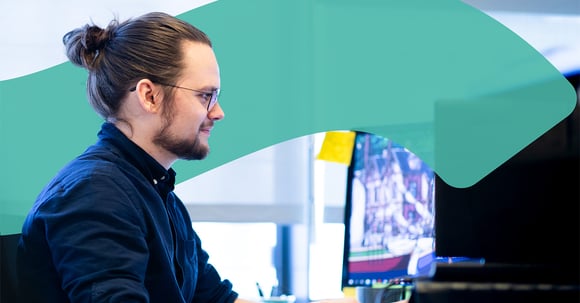The growing demand for skills is shaping the future of work, and believe it or not, your employees are more than willing to adapt to changes. In fact, they strive for it and your competency development can benefit from learning flows.
Read on below and learn how you can use learning flows to equip your employees with new skills and competencies.
A company’s success depends on its development of the right competencies and skills. Employees need a clear understanding of their roles and what is expected of their performance.
But essential to their performance and growth is that they can be trained effectively to become better at reaching their goals and deliver more quality work.
Not only do you need a supportive learning environment, if you don’t have a structured way of delivering learning you may not reach full potential of the competency development in your company.
A way of establishing effective competency development is the use of learning flows. Learning flows is in general a great way to structure learning and training, especially with use of a digital learning platform.
What is a learning flow?
A learning flow is, in short, a collection of learning activities, that constitute a learning path derived from your learning and development plan. You want to create a learning flow, when your employees need to acquire knowledge and skills about a new subject.
Usually there is a massive focus on the learning event (and the learning event alone), but not on what happens before, between and after the learner is exposed to the learning. When you create a learning flow you make sure that you don’t create “one off” learnings, but instead you create learning, that are stretched out and tailored to the employees learning lifecycle.
The purpose of learning flows
The basic principles of learning flows can be used to almost every learning and development activity. It is a way of making the learning better, more sustainable and more effective. There are three basic elements, which need to be integrated into a great learning flow:
-
Different learning activities
-
Time to digest and stretch out the learning
-
People and tools to support the learning
1. Different learning activities
Effective learning = versatile learning activities
The most effective learning experience is created by varying the learning activities as much as possible. We learn best when the learning activities are varied – and when there is a little for every taste. It could be videos, learning games, gamification, podcasts and the like.
2. Time to digest and stretch out the learning
Learning becomes more effective and sustainable if it’s stretched out over a longer path and timeline, so that it is possible to combine knowledge, reflection, and the opportunity to test and try out what has been learned.
3. People and tools to support the learning
Even though the learning is digital, the aim is to get it to live in the real world. And that happens best by having people who support it. It can be a good idea to make room for sparring, reflection or feedback between each learning activity.
But who can support the new learning? Colleagues, Supervisors, Manager. And if that is not possible, then make sure, that you have a platform or apps to support the learning with follow ups and additional learning.
How can learning flows improve competency development?
Let’s us have a look at how the basics of learning flows can be used to in competency development. Above you see an image of a learning flow for IT security in compliance training.
The learning becomes more effective because it’s versatile (a mix of video, games, digital learning, articles and quizzes). It is more effective because it appeals to different ways of learning, since the format varies.
The learning is also stretched out instead of taking place as a “one off” learning. This makes it more efficient, since the micro learnings are more prone to change behavior over time, than just a single learning event. Furthermore, it ensures time to digest the learning and reflect upon it.
The last thing here in this flow is to make sure, that peers and managers support the learning, in order to transform the learning to changed behavior.
This is a practical example on, how you can use learning flows in competency development in order to make it more effective and engaging.
Want to learn more? Read our blog post about stretched learning here or read our extensive guide to learning and training throughout the employee journey below.


